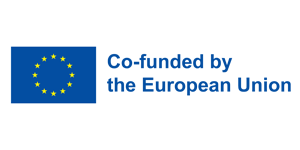Interacting on the networked planet
Proteus 4.1 evolved into a web-based application using gaze-tracking in mobile devices and a modular, non-site-specific installation. It embodies interactions across digital infrastructure in a single space. Inspired by Yona Friedman’s post-war megastructures and “proteinic architecture,” it mirrors the internet’s distributed nature with scattered digital screens and mirrors. Slow evolution of ferropatterns encourages AI-powered mindfulness, countering digital distraction and information overload.
Proteus 4.1 is the recent version of the interactive and generative series called Proteus, which uses the complex material behaviour of ferrofluid as a vector to seek meaning in uncertainty. This version evolved its mode of interaction by distributing it via a web-based application using gaze-tracking from cameras embedded in personal mobile devices. Its physical counterpart is a modular and non-site-specific installation that aims at embodying interactions happening fluently across the digital infrastructure in a single space.
As a direct reference to post-war architectural megastructures and the concept of “proteinic architecture” from Yona Friedman, the installation mirrors the internet’s distributed nature by spatial articulations of scattered digital screens and mirrors within a modular structure. Observing a slow-paced evolution of ferropatterns encourages AI-powered mindfulness to counter the digital age’s attention economy characterized by distraction and information overload.
Bio
-
 Photo: Maria Smigielska
Photo: Maria SmigielskaMaria Smigielska
PL CH
Maria Smigielska is an architect and researcher educated in Switzerland and Poland, based in Zurich. Working with architectural elements, design objects and mixed-media installations, she uses digital and interactive technologies for encoding and modulating materials properties, custom fabrication and design. She has exhibited internationally since 2013, with recent appearances at Tallinn Architecture Biennale, Biennale for Arts and Technology in Trondheim, ZKM and Copernicus Science Center.
-
 Photo: Zosia Prominska, Compmonks
Photo: Zosia Prominska, CompmonksCompMonks
FR CH
Compmonks is a trained architect who studied in France and is now a researcher in technology for architecture based in Switzerland. He currently leads a research project on interactive and generative design with BCI at ETH Zürich. His artistic work follows a series of design objects and mixed-media installations shedding light on the power of combining humans with computers. Among his most recent appearances are Centre Pompidou Paris, Biennale for Arts and Technology Trondheim, and ZKM Karlsruhe.
Credits
Interactive installation, on-site and online Year: 2023
Artists: Maria Smigielska, CompMonks
Software development 2023: Mihael Giba, Juraj Komericki
Physical installation production 2023: William Linn
Physical installation production 2024: esc medien kunst labor and Ars Electronica Interactive web-based reaction-diffusion based on the development by Linus Mossberg (https://linusmossberg.github.io/)
This work was realised within the framework of a European Media Art Platform residency program at KONTEJNER | bureau of Contemporary Art Praxis with support from the Creative Europe Culture Programme of the European Union. The physical installation has been further developed in 2024 with the support from esc medien kunst labor and Ars Electronica.
Presented in the context of the EMAP project. EMAP is co-funded by the Creative Europe Programme of the European Union.







